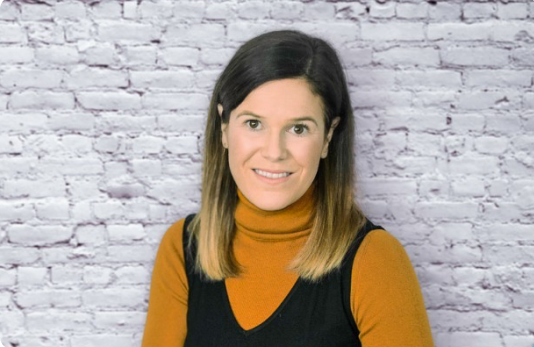Contents
London’s transport network saw the busiest morning rush hour yesterday since the pandemic hit, with newspaper headlines reporting on: ‘London’s big return: thousands pour back into the city after months of WFH’ (Evening Standard, 6th September 2021). Yet, as has been a major topic of discussion over recent months, this return is by no means ‘back to normal’.
Many commuters interviewed yesterday shared plans of a three-day return to the office; perhaps one of the most common ‘hybrid working’ models currently on trial. Teams have been busy implementing new policies and processes to support hybrid working success, which may continue to evolve for some time as organisations work out what’s the best hybrid working model fit for the business and their people.
The next stage in this change journey will inevitably require individual and organisational adjustment to a different set of work-life behavioural norms. This may raise new questions for leaders and managers, who must consistently implement updated policies and processes whilst also paying attention to the different emotional and behavioural factors of change.
To add yet another layer of complexity, there are various individual differences to take into consideration within the context of hybrid working. In just one of the many studies that have been released sharing data on desired working patterns of the future, a survey commissioned by Microsoft reported that while over 70% of employees want remote work options to continue in some form, there’s also 65% who want more time in-person with their teams. And there is growing research exploring the potential negative consequences of hybrid working on certain employee groups.
This will require an important focus on the evolution of a hybrid team and organisational culture. To support the wider long-term success of these new ways of working, behaviour really does matter.
What is a positive hybrid working culture?
A positive hybrid team culture should be one which allows individuals to be their best and do their best work for the collective benefit of the team and wider business. And perhaps one of the most important things to realise about hybrid working is the intentionality and effort necessary to maintain this culture, particularly as the hybrid model continues to evolve.
At an individual level, leaders must make time to understand and proactively respond to explicit and implicit feedback from their teams throughout the hybrid working transition, whilst giving conscious attention to the alignment of behaviours to new workplace policies and processes. Encouraging and supporting leaders to put the following three ingredients into action will help to co-create a positive hybrid team culture today and for the future:
Connect and create alignment between individual and organisational values
Culture is an outward representation of what’s really valued as demonstrated by what people do rather than what is said. Connect as an ingredient is therefore about enhancing awareness and appreciation of what is truly valued by a team, and then aligning this to the company values and desired hybrid ways of working.
The reason connection is so important within a hybrid working culture is because it creates a sense of proximity – even when individuals are working in a dispersed or asynchronous way. Psychological research tells us that individual and team effectiveness is driven by people feeling close, connected, engaged and intertwined with each other’s success and the success of the organisation.
It also ensures there’s a wider understanding of individual contexts, which helps to minimise unhelpful attributions or assumptions being made. For example, understanding that someone goes temporarily offline at 3.30pm to pick up their child from school rather than just clocking off early; while another team member has a do not disturb status at 1-2pm while they go to a yoga class. This in turn creates a culture of openness, transparency and trust.
One of the benefits of the last year has been the opportunity to get to know colleagues at a much deeper level, often with greater insight into and appreciation of their lives outside of work than may have been known before. This gives teams a good starting point to continue to build connections and shared understanding. And if the pandemic working experience hasn’t been a positive one for the team, or certain team members, it’s also important to make space to recognise and understand where lessons can be learnt and taken forward into the new hybrid working culture.
It’s worth reflecting on the everyday team interactions that help to build connection, which might once have occurred around the water cooler and now need a bit more conscious thought to include team members working remotely or to different schedules. This could be something as simple as introducing a regular 30-minute virtual team lunch with zero work agenda. Encouraging this type of conscious networking beyond the team also helps people to stay connected to colleagues in other departments, which reduces the potential risk of more silo working in remote and hybrid teams.
Communicate a shared purpose with clear accountability
Looking at the psychology of communication within the context of effective teams, one of the key areas highlighted is the importance of creating a shared identity. This is especially important when teams work in a dispersed or asynchronous way as it gives a sense of unity and limits the potential risk of an ‘us’ versus’ them mentality between those in the office and those working remotely.
When this shared identity is missing, it can have a negative impact on team trust. It reduces psychological safety and the belief that it’s safe to speak up in the group, and it can lead to people withholding information which in turn increases conflict.
The language used to create this sense of shared identity is important, and it’s often the subtleties in language that make the difference. Referring to colleagues who work from home as ‘remote workers’ suggests that they are in some way separate or different to those who work in the office. Leaders therefore have an important part to play in role modelling an inclusive way of communicating.
To support this, it’s important that leaders look to articulate an overarching goal, with a focus on outputs and results over ‘hours in the office’. Psychological research has found that teams often bond best when there is clarity on how individual actions contribute to shared outcomes, and so there’s real benefit to revisiting personal and shared goals as part of the move to hybrid working. Aligning goals to shared values will make them even more meaningful.
As a team, agreeing how to track progress and celebrate success towards agreed goals creates a shared purpose with clear accountability. While working to establish a positive hybrid team culture, it is important to circulate positive feedback showcasing why the team’s collective work is valued. Celebrating small wins is particularly vital during times of change and uncertainty as it gives the team a sense of individual and collective progress.
Constructively challenge rituals and habits that go against new ways of working
Once shared team identity and understanding are established, there is greater opportunity to objectively challenge behaviours that go against these norms or break the group trust.
During times of transition, such as the move to hybrid working, this requires a heightened awareness of the behaviours that help and hinder the evolving team culture. This starts with a spotlight on current leadership behaviours, before looking at the habits and behaviours of the collective, constructively challenging upwards if it’s recognised that the habits and behaviours being role modelled by those in senior positions of influence are not in line with the hybrid working culture and values the organisation aims to live by.
Often this requires increased leadership understanding of how their behaviours are perceived by different members of the team, which may at times differ to their intentions. For example, something as simple as being in the habit of asking for status updates from members present in the room before those dialling into the call remotely could unintentionally signal a hierarchy of input. From a team perspective, this could include getting into the habit of documenting the outputs from team meetings so that those not there in person still feel connected and involved.
Building a positive culture in a hybrid model will also require even more open, honest and transparent cross-team communication, with opportunity to give continuous two-way feedback on what’s working well and what still stands in the way. Communications should proactively encourage the team to experiment with new working practices to avoid slipping back into old rituals and ways of working that may no longer support a positive hybrid culture, whilst offering the chance to constructively review and learn from the outputs, together.
At ChangingPoint, we help companies with personal, team, and organisational development. Our industry-leading Change Leadership Programme includes aligning people to new policies, processes and ways of working. Get in touch today for help putting these ideas into practice.

Written by Jayne Ruff
Jayne Ruff, Occupational Psychologist & Managing Director at ChangingPoint. To find out more about how ChangingPoint can help you align minds to transform your business, get in touch.
From the blog

Blog How Leaders Can Create Psychological Safety at Work
While many discussions about safety in the workplace are rightfully centred around physical health and safety, they should be expanded to cover psychological safety at work too.
Read more
Blog Strife or Thrive? 7 Most Common Challenges in Family Businesses
Take a closer look at how tradition, innovation, and change intersect within a family business context.
Read more
Blog The Glass Cliff: A Perilous Path for Women in Leadership
Learn what the glass cliff is, how it affects women’s leadership positions, and what we can do together to create more inclusive workspaces.
Read more





